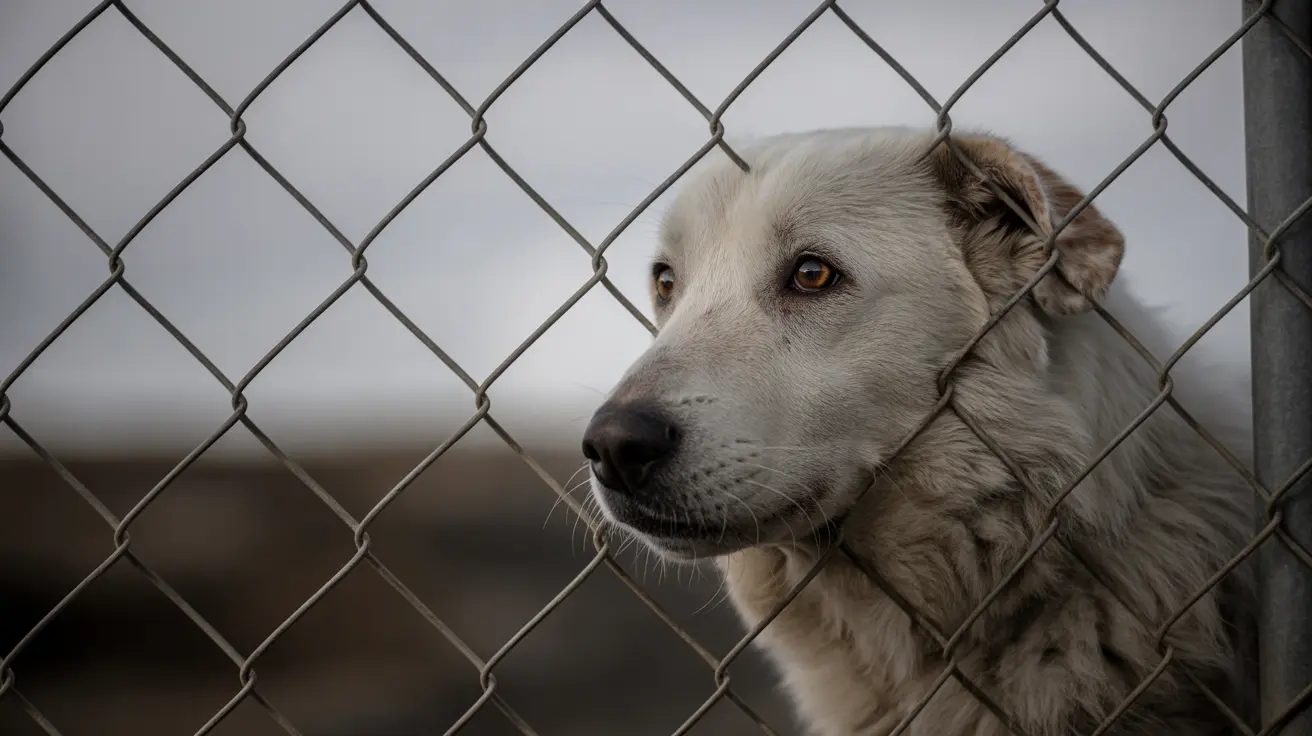A sobering new investigation reveals that one in four animals entering North Carolina shelters will never make it out alive. The WRAL Investigates report shines a spotlight on the state's persistently high animal shelter euthanasia rates, particularly across several Triangle-area counties, highlighting a crisis that demands immediate community attention and action.
While national trends show progress in reducing shelter euthanasia rates, North Carolina continues to lag behind, with overcrowding and resource disparities creating a heartbreaking reality for thousands of pets each year. This investigation underscores why understanding and addressing these challenges is crucial for every pet parent and animal lover in the state.
The Reality of NC Shelter Pet Statistics
The data paints a stark picture of the challenges facing North Carolina's animal welfare system. With one in four animals not surviving their shelter stay, the state ranks among those with the highest euthanasia rates nationwide. This statistic represents not just numbers, but thousands of potentially adoptable pets who could have found loving homes with proper resources and community support.
The investigation reveals significant disparities between counties, with some areas struggling with euthanasia rates well above the state average while others are making progress toward no-kill status. These variations often correlate with available resources, community engagement levels, and access to preventive services like spaying and neutering.
High Euthanasia Rate Counties Face Unique Challenges
Rural and under-resourced counties face particular struggles with shelter overcrowding and limited funding. Counties like Robeson and Johnston have been identified as having notably high euthanasia rates, often due to a combination of factors including high intake numbers, limited adoption programs, and insufficient community partnerships with rescue organizations.
These areas often lack adequate staffing, facility space, and funding for comprehensive animal care programs. The result is a cycle where shelters become overwhelmed, leading to difficult decisions about which animals can be saved and which cannot.
Feral Cat Euthanasia Represents Significant Challenge
A substantial portion of shelter euthanasias involves feral cats, which present unique management challenges. These animals often cannot be adopted into traditional homes but continue to reproduce rapidly without intervention. Effective community cat management programs, including trap-neuter-return initiatives, have shown promise in other states but require dedicated funding and community support to implement successfully.
How to Save Shelter Dogs and Cats Through Community Action
Pet parents and community members have numerous opportunities to make a meaningful impact on these statistics. Adopting pets from shelters rather than purchasing from breeders or pet stores directly saves lives while making space for additional rescues. Fostering provides temporary homes that can mean the difference between life and death for animals awaiting permanent placement.
Supporting local spay and neuter programs represents one of the most effective long-term solutions. These preventive measures address the root cause of overpopulation, reducing the number of unwanted animals entering shelters in the first place.
Shelter Overcrowding Solutions Require Multi-Pronged Approach
Addressing North Carolina's shelter crisis requires coordinated efforts between shelters, rescue organizations, and community members. Successful shelter transfer laws and rescue partnerships have shown promise in moving animals from high-kill facilities to areas with greater adoption capacity.
Pet fostering programs need expansion, as they provide critical overflow capacity during peak intake seasons. Additionally, community education about responsible pet ownership, including the importance of spaying and neutering, can help prevent future overcrowding situations.
Progress Toward No-Kill Status Remains Possible
Despite the challenges, some North Carolina counties are making significant progress. Areas with strong community support, well-funded programs, and active rescue partnerships are approaching the 90% live-release rate that defines no-kill status. These success stories demonstrate that change is possible with adequate resources and community commitment.
Frequently Asked Questions
Why is North Carolina's animal shelter euthanasia rate so high compared to other states?
Despite national progress in reducing euthanasia, North Carolina remains among the top states for euthanizing shelter pets, largely due to overcrowding, inconsistent access to low-cost spay/neuter services, and resource disparities between urban and rural counties.
How can I help reduce shelter euthanasia rates in my area?
Pet owners can make a difference by adopting or fostering animals instead of buying, donating supplies or funds to shelters, and ensuring their pets are spayed or neutered to prevent overpopulation.
What are the main reasons North Carolina shelters euthanize animals, and are these preventable?
The primary reasons include lack of space, high intake numbers (especially feral cats), and insufficient resources. Many euthanasias—particularly for healthy animals—are preventable with more community support, funding, and robust spay/neuter programs.
Which North Carolina counties have the highest and lowest shelter euthanasia rates, and why?
Counties like Robeson and Johnston have notably high euthanasia rates due to resource limitations, while counties like Orange with strong community support and funded programs are approaching "no-kill" status.
What does "no-kill" mean for animal shelters, and is this status realistic in North Carolina?
No-kill shelters maintain at least a 90% live-release rate, euthanizing only for unmanageable health or behavior issues. North Carolina has fewer no-kill shelters than the national average, but with increased public involvement and policy changes, progress is possible.






